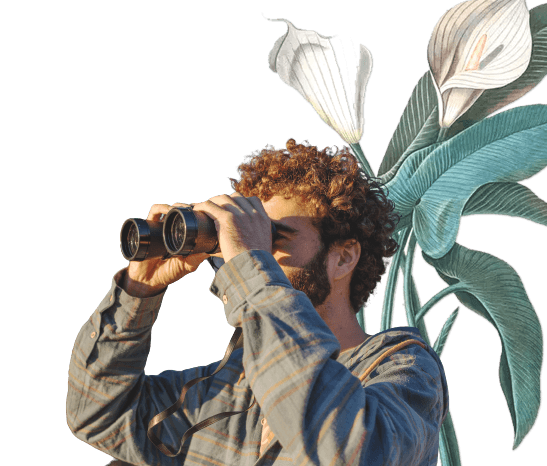Not a new partner, but a focus on alignment
By Vinit Jain, Design and Sustainability Practitioner; Chair, Union of Concerned Researchers in Fashion; Board Member, Rantai Textile Lestari.
6 October 2025

Pexels
Note: This article reflects on “Dancing with Paradigms — Could systemic wisdom emerge?”, the first discussion paper in our series. The paper seeks to spark reflection and dialogue on how to move beyond entrenched ways of thinking towards more life-affirming pathways. Already, it has inspired rich conversations in our community, including the thoughtful contribution that follows from Vinit Jain. As we continue this exploration together, your reflections are warmly invited.
When I first read the discussion paper Dancing with Paradigms — Could systemic wisdom emerge?, I felt both inspired and unsettled. It raises urgent questions: “what are we to do? what is our theory of change?” It calls for pluralism, integrative approaches and resonance across worldviews. It even recalls Donella Meadows’ reminder in Leverage Points that “no paradigm is ‘true’.” Yet I could not shake the sense that the paper risks scattering focus. Meadows once invited us to dance with systems. The paper suggests extending this to paradigms. But do we need a new partner at all? The real challenge is not shifting between abstractions but correcting the focus of the dance itself. For decades, humanity has moved out of rhythm, with growth, consumption and control as our choreographers, while forgetting the music of life. What we need is not a new partner. We need alignment, aligning our human-created systems with the larger living system, nature itself.
Beyond systems and paradigms
To its credit, the paper articulates an ambitious aim: “the reconciliation among humans, with all living beings and with time, as a process to co-create and live desirable futures of wellbeing for all on a healthy planet.” It also describes a holistic attitude: “everything on Earth is interconnected and interdependent within the web of something greater than us… the consequences of our actions will come back to us.”
These passages are powerful, yet reconciliation as an end-state and interdependence as description still lack orientation. Without focus, openness risks turning into diffusion. What provides that orientation is alignment. Rather than speaking only of systemic change, which can scatter into competing theories and paradigms, we need to speak of systemic alignment. This means the deliberate realignment of our human-created systems with the living system of nature. Only when alignment with interdependence becomes the explicit objective of our systems can reconciliation move from aspiration to practice. The paper itself asks whether we could morph “capital” into “heritage.” That is another way of expressing alignment, since heritage is relational and life-affirming, while capital remains abstract and extractive. But unless alignment is named and pursued directly, such shifts risk staying rhetorical.
Reconciliation, interdependence, alignment
Adding a clear objective of alignment with life would not constrain The Fifth Element’s open invitation; it would give it direction. This is not about narrowing approaches but about clarifying their purpose. Whether through regenerative business, intergenerational contracts or cultural transformation, the aim is the same, realigning our human dance with the rhythms of the biosphere. Reconciliation is the desired end-state, and alignment is the everyday practice that makes it possible.
Wisdom traditions and the human gap
Ancient philosophies remind us that alignment, not abstraction, leads to flourishing. The Jain concept of anekāntavāda (many-sidedness) shows that truth is never singular, while syādvāda (conditional viewpoints) teaches us to hold perspectives lightly. Jainism emerged more than 2,500 years ago as a counter to ritual dominance and hierarchy. Its radical proposal is that liberation and wellbeing come from humility, non-violence and the interdependence of actions and consequences. Every act, however small, shapes the conditions of life for all beings. Importantly, Jainism also extends the notion of life beyond humans, animals and plants to include subtle forms in air, water, fire and earth, recognising them as living entities. This understanding widens “life itself” to encompass what modern science might call non-living systems, deepening the call for alignment.

This need for orientation echoes what The Club of Rome argued decades ago. In 1979, No Limits to Learning warned of the “human gap,” the gulf between our extraordinary capacity to act and our weaker capacity to learn deeply and align with life. It also cautioned that this gap creates an incapacity for systemic change, the dissonance between our insights and our reluctance to change at depth. Without focus, even the most innovative approaches risk circling back to the status quo. This is why alignment matters. It bridges the human gap by orienting our capacities towards life itself, ensuring that scattered efforts do not collapse back into inertia.
Us and them: towards systemic wisdom
The paper acknowledges the “us and them” divide and the inevitable question, how do you convince them? My response is that alignment with life is not about persuading opponents into our paradigm; it is about creating resonance that makes old patterns untenable. As wisdom traditions remind us, actions carry consequences. “They” are not separate from us, and the consequences of their choices, like ours, come back to all. Alignment does not erase conflict, but it reframes it as a shared reckoning with life rather than an “us versus them” struggle. The real question is not “how do we convince them?”, but “how do we make alignment unavoidable for all?”
The paper asks, “what is our theory to ensure systemic change?” I suggest a different question, “how can we realign our systems with life itself?” Theories of change can differ. Paradigms can multiply. Worldviews can diverge. But if we miss alignment, we miss the point. Alignment is not another paradigm. It is the rhythm that makes the dance possible at all. Until then, no matter the partner, our dance will remain dissonant. At a time of existential crises, the difference between scattering questions and focusing attention may mean the difference between survival and collapse. We don’t lack wisdom. We lack focus. And so, while Dancing with Paradigms opens valuable terrain, perhaps the real invitation is this, not to dance endlessly with new partners but to finally learn how to align our steps with the music of life.
In the end, systemic wisdom will emerge not from multiplying paradigms, but from aligning our systems with nature itself.

